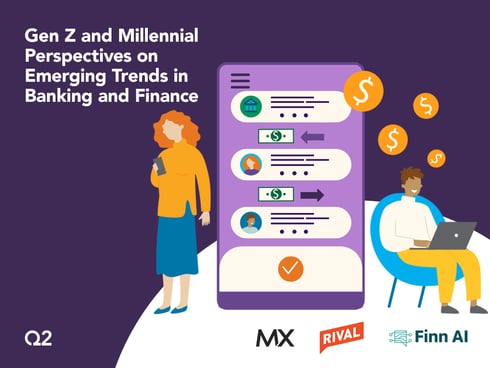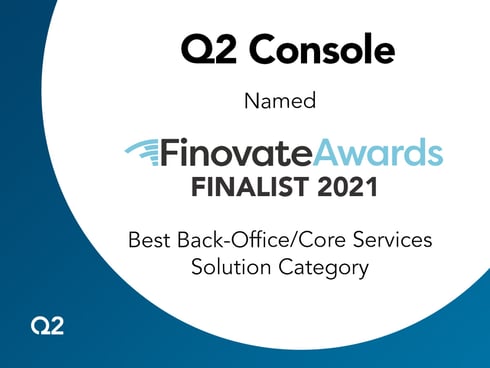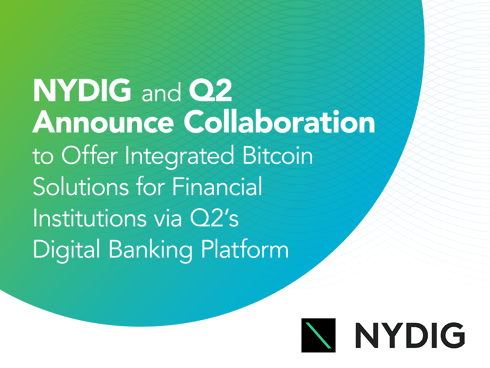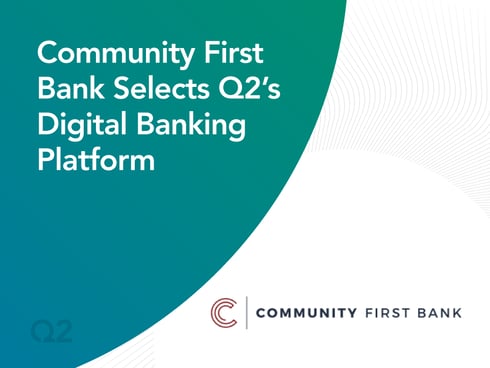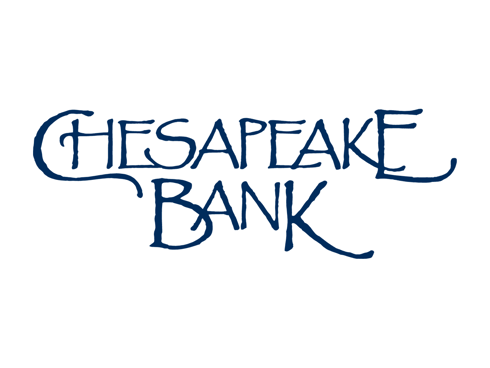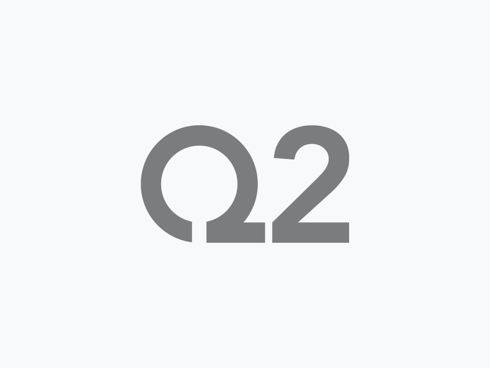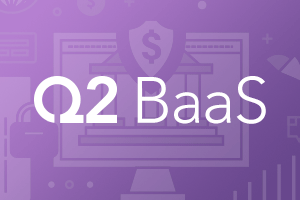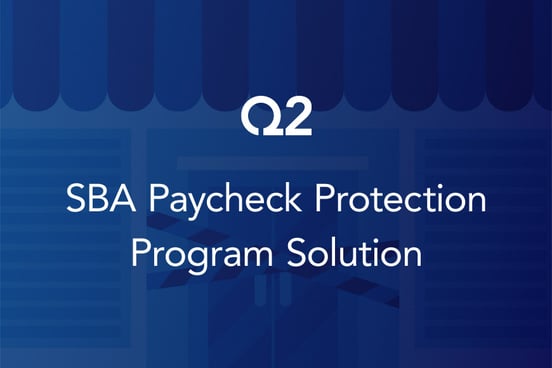Q2 Announces State of Commercial Banking July 2023 Market Analysis Report
26 Jul, 2023

Report demonstrates cross-sell impact, with data revealing commercial relationships that include treasury management can generate three times the return on equity when compared to credit-only relationships
AUSTIN, TX (July 26, 2023)—Q2 Holdings, Inc. (NYSE:QTWO), a leading provider of digital transformation solutions for banking and lending, will release its State of Commercial Banking July 2023 Market Analysis following the State of Commercial Banking Mid-Year Update webinar, which will take place on Thursday, July 27, at 1 p.m. CDT. The report, based on insights mined from Q2’s proprietary databases, is a mid-year update to its annual review of the major trends in the commercial banking industry, as well as a look at what the second half of 2023 may hold. The webinar provides an overview of report findings and offers exclusive insight into commercial banking market trends and mid-year predictions.
“In January’s analysis, we discussed the increasing pressure on net interest margin (NIM), which has continued to escalate and drive financial institutions to focus on developing and executing strategies to foster primacy and drive deposit growth,” said Gita Thollesson, manager, strategic advisory services, Q2. “Q2 PrecisionLender data suggests that despite liquidity challenges, credit quality has remained fairly stable, and financial institutions’ commitment to creating a collaborative environment for treasury and loan officers is yielding quantifiable results. Our data indicates banks prioritizing cross-sell, specifically when the relationship includes treasury management, can generate up to three times the return on equity when compared to credit-only relationships.”
Findings for this report are based on Q2 PrecisionLender’s proprietary database of 2023 commercial lending deal flow, along with economic data from several public sources, including the Federal Deposit Insurance Corporation (FDIC) and Federal Reserve, and industry research. Q2 PrecisionLender data reflects commercial relationships from more than 150 geographically diverse banks and credit unions in North America, ranging in size from small community banks to top 10 U.S. institutions.
Key Takeaways from the Report:
- Banks move aggressively to raise deposit rates: After a sluggish start, banks have been quick to raise rates paid to commercial customers, particularly on larger accounts. The action—which bankers expect will help slow the deposit bleeding—is coming at a cost: higher interest expense and lower net interest margin (NIM);
- Bankers are showing conservatism in their pricing strategies: At the start of the year, many experts predicted an economic downturn, likely to be fast-tracked by the Fed’s persistent rate increases. Regardless of whether the slowdown has come to fruition, conversations with bankers and our data show bankers are becoming more conservative in their pricing strategies;
- Aggregate credit metrics hold strong, though pockets of stress exist: The office sector is under stress with delinquencies and charge-offs trending higher, and office vacancy rates are on the rise. The trends underscore the importance of active portfolio management in mitigating risk and maximizing risk-adjusted returns; and
- Cross-selling is as important as ever: Facing higher funding costs and rising provisions, additional focus on lucrative fee-based business is critical. NIM is no longer rising with each progressive rate hike and will face further pressure when rates start to head south. Relationship retention and profitability data indicates that the time to focus on relationship expansion is now.
“The last several months have certainly been a wake-up call for the commercial banking industry beyond what could have been predicted at the start of the year,” said Thollesson. “As we look to the second half of 2023, we feel it will be critical for financial institutions to remain nimble and embrace collaboration between treasury and loan officers while also focusing on cross-sell opportunities to deepen client relationships and compete in our ever-changing economic landscape.”
Click here to learn more and register for the 2023 State of Commercial Banking Mid-Year Update webinar on Thursday, July 27, at 1 p.m. CDT. All registrants will receive a copy of the report following the webinar.
To learn more about how Q2 delivers simple, smart, end-to-end banking and lending solutions for commercial financial institutions, visit: https://www.q2.com/commercial.
About Q2 Holdings, Inc.
Q2 is a leading provider of digital banking and lending solutions to banks, credit unions, alternative finance companies, and fintechs in the U.S. and internationally. Q2 enables its financial institutions and fintech companies to provide comprehensive, secure, data-driven digital client engagement solutions—from consumers to small businesses and corporate clients. Headquartered in Austin, Texas, Q2 has offices throughout the world and is publicly traded on the NYSE under the stock symbol QTWO. To learn more, please visit Q2.com. Follow us on LinkedIn and X (Formerly Twitter) to stay up-to-date.
Forward-looking Statements
This press release contains forward-looking statements, including statements about: increasing pressure on net interest margin; financial institution focus on developing and executing strategies to foster primacy and drive deposit growth; financial institutions commitment to creating a collaborative environment for treasury and loan officers; the ability of cross-sell combined with treasury to generate additional return on equity; banker conservatism in pricing decisions; trends and stress impacting the office sector; the importance of active portfolio management in mitigating risk and maximizing risk-adjusted returns; the importance of cross-selling, focusing on fee-based business and relationship expansion; the future impact on net interest margin of future interest rate changes; and, the importance for financial institutions to remain nimble and embrace collaboration between treasury and loan officers while also focusing on cross-sell opportunities to deepen client relationships and compete. The forward-looking statements contained in this press release are based upon Q2’s historical performance and its current plans, estimates, and expectations and are not a representation that such plans, estimates or expectations will be achieved. Factors that could cause actual results to differ materially from those described herein include risks related to: uncertainties in the banking and financial services industries, including as a result of recent bank failures, and the potential impacts on Q2’s customers' prospects and Q2’s business sales cycles, Q2’s prospects' and customers' spending decisions, including professional services which are more discretionary in nature, and the timing of customer implementation and purchasing decisions; (b) the risk of increased or new competition in Q2’s existing markets and as Q2 enter new markets or new sections of existing markets, or as Q2 offer new solutions; (c) the risks associated with the development of Q2’s solutions and changes to the market for Q2’s solutions compared to Q2’s expectations; (d) quarterly fluctuations in Q2’s operating results relative to Q2’s expectations and guidance and the accuracy of Q2’s forecasts; (e) the risks associated with anticipated higher operating expenses in 2023 and beyond; (f) the impact that inflation, rising interest rates, an economic stagnation or slowdown in the economy, or challenges in the financial services industry, financial markets and credit markets have had to date or in the future could have on account holder or end user, or End User, usage of Q2’s solutions, including the promotion and adoption of Q2’s Helix and payment solutions, and on Q2’s customers' prospects and Q2’s business sales cycles, Q2’s prospects' and customers' spending decisions, including professional services which are more discretionary in nature, and the timing of customer implementation and purchasing decisions; (g) the risks and increased costs associated with managing growth and the challenges associated with improving operations and hiring, retaining and motivating employees to support such growth, particularly in light of the macroeconomic impacts of the novel coronavirus disease, or COVID-19, including increased employee turnover, labor shortages, wage inflation and extreme competition for talent; (h) the risk that the residual impacts of the COVID-19 pandemic and the associated efforts to limit its spread continue to negatively impact or disrupt the markets for Q2’s solutions and that the markets for Q2’s solutions do not return to normal or grow as anticipated; (i) the risks associated with Q2’s transactional business which are typically driven by end-user behavior which can be influenced by external drivers outside of Q2’s control; (j) the risks associated with effectively managing Q2’s cost structure in light of the challenging macroeconomic environment, challenges in the financial services industry and from the effects of seasonal or other unexpected trends; (k) the risks associated with the general economic and geopolitical uncertainties, including the heightened risk of state-sponsored cyberattacks on financial services and other critical infrastructure, and continued or increased inflation partially driven by increased energy costs or other unpredictable economic impacts that have and may continue to negatively affect demand for Q2’s solutions; (l) the risks associated with managing Q2’s business in response to continued challenging macroeconomic conditions, challenges in the financial services industry and any anticipated or resulting recession; (m) the risks associated with accurately forecasting and managing the impacts of any macroeconomic downturn or challenges in the financial services industry on Q2’s customers and their end users, including in particular the impacts of any downturn on financial technology companies, or FinTechs, or alternative finance companies, or Alt-FIs, and Q2’s arrangements with them, which represent a newer market opportunity for us, a more complex revenue model for us and which may be more vulnerable to an economic downturn than Q2’s financial institution customers; (n) the challenges and costs associated with selling, implementing and supporting Q2’s solutions, particularly for larger customers with more complex requirements and longer implementation processes, including risks related to the timing and predictability of sales of Q2’s solutions and the impact that the timing of bookings may have on Q2’s revenue and financial performance in a period; (o) the risk that errors, interruptions or delays in Q2’s solutions or Web hosting negatively impacts Q2’s business and sales; (p) the risks associated with cyberattacks, data and privacy breaches and breaches of security measures within Q2’s products, systems and infrastructure or the products, systems and infrastructure of third parties upon which Q2 relies and the resultant costs and liabilities and harm to Q2’s business and reputation and Q2’s ability to sell Q2’s solutions; (q) the difficulties and risks associated with developing and selling complex new solutions and enhancements with the technical and regulatory specifications and functionality required by Q2’s customers and relevant governmental authorities; (r) regulatory risks, including risks related to evolving regulation of artificial intelligence, or AI, machine learning and the receipt, collection, storage, processing and transfer of data; (s) the risks associated with Q2’s sales and marketing capabilities, including partner relationships and the length, cost and unpredictability of Q2’s sales cycle; (t) the risks inherent in third-party technology and implementation partnerships that could cause harm to Q2’s business; (u) the risk that Q2 will not be able to maintain historical contract terms such as pricing and duration; (v) the general risks associated with the complexity of Q2’s customer arrangements and Q2’s solutions; (w) the risks associated with integrating acquired companies and successfully selling and maintaining their solutions; (x) litigation related to intellectual property and other matters and any related claims, negotiations and settlements; (y) the risks associated with further consolidation in the financial services industry; (z) the risks associated with selling Q2’s solutions internationally and with recent expansion of Q2’s international operations; and (aa) the risk that Q2’s debt repayment obligations may adversely affect Q2’s financial condition and cash flows from operations in the future and that Q2 may not be able to obtain capital when desired or needed on favorable terms.
###
MEDIA CONTACT
Carly Baker
Q2 Holdings, Inc.
+1 210-391-1706










.png?height=368&name=Newsroom_1200x900%20(1).png)







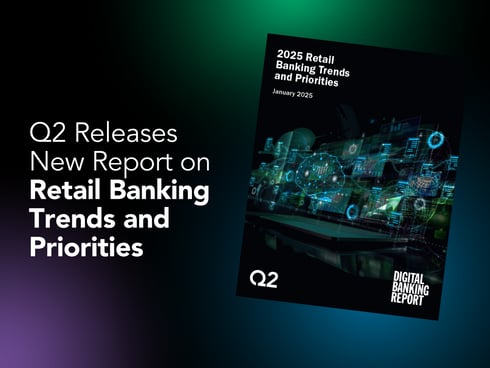




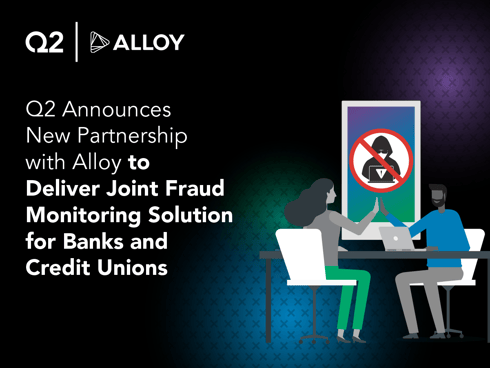
.png?height=368&name=4Front_Blog_1200x900%20(1).png)


.png?height=368&name=TopWorkplaces_2024_Newsroom%20Blog_1200x900%20(1).png)
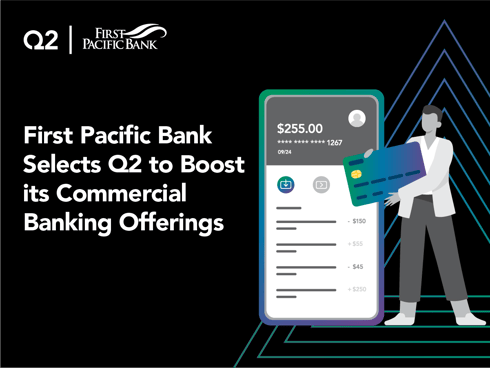


.png?height=368&name=Datos%20Cash%20Management%20Matrix_Newsroom%20(1).png)


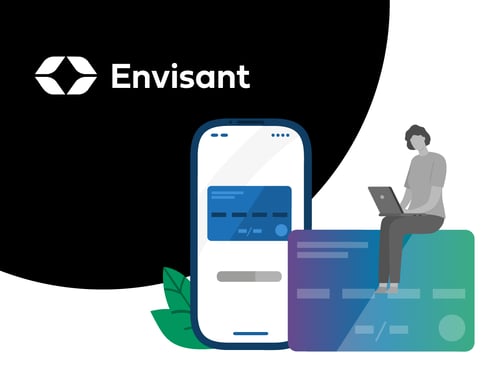


















%20(1).png?height=368&name=MicrosoftTeams-image%20(14)%20(1).png)

.jpg?height=368&name=Newsroom_1200x900-100%20(1).jpg)


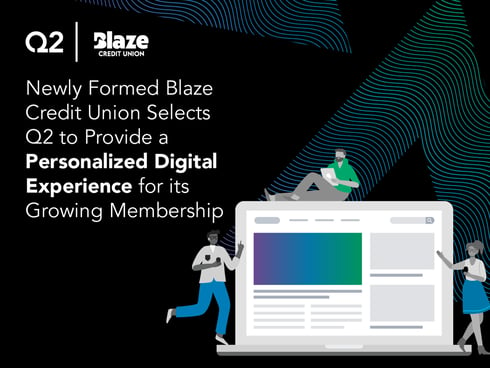





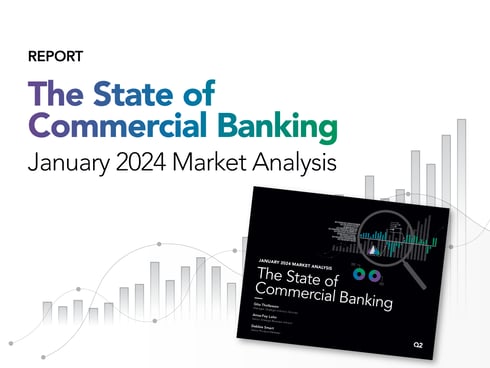














.png?height=368&name=MicrosoftTeams-image%20(82).png)


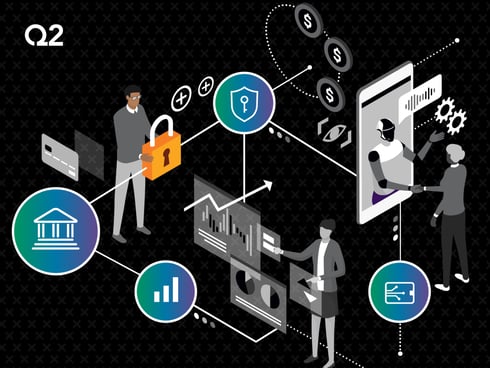


.png?height=368&name=MicrosoftTeams-image%20(79).png)
%5B29%5D.jpg?height=368&name=2023-Philanthropy-Fund-PR-1200x900%20(1)%5B29%5D.jpg)

.jpg?height=368&name=AiteCashManagementWP_PR-Blog%20(1).jpg)
.png?height=368&name=MicrosoftTeams-image%20(74).png)
.png?height=368&name=MicrosoftTeams-image%20(73).png)

.png?height=368&name=MicrosoftTeams-image%20(71).png)


.png?height=368&name=MicrosoftTeams-image%20(66).png)


.png?height=368&name=MicrosoftTeams-image%20(64).png)

-1.png?height=368&name=MicrosoftTeams-image%20(14)-1.png)




.png?height=368&name=MicrosoftTeams-image%20(60).png)
.png?height=368&name=MicrosoftTeams-image%20(58).png)
-2.png?height=368&name=MicrosoftTeams-image%20(56)-2.png)
.png?height=368&name=MicrosoftTeams-image%20(57).png)

.png?height=368&name=MicrosoftTeams-image%20(52).png)


.png?height=368&name=MicrosoftTeams-image%20(48).png)
.png?height=368&name=MicrosoftTeams-image%20(46).png)

.png?height=368&name=MicrosoftTeams-image%20(43).png)
.png?height=368&name=MicrosoftTeams-image%20(38).png)

.png?height=368&name=MicrosoftTeams-image%20(11).png)

.png?height=368&name=MicrosoftTeams-image%20(30).png)
-1.png?height=368&name=MicrosoftTeams-image%20(28)-1.png)

.png?height=368&name=MicrosoftTeams-image%20(27).png)


.png?height=368&name=MicrosoftTeams-image%20(10).png)

.png?height=368&name=MicrosoftTeams-image%20(9).png)
.jpg?height=368&name=Newsroom-1200x900-2-100%20(1).jpg)


.png?height=368&name=InnovationStudio_FintechAdoption_Newsroom%201200x900%20(2).png)
.png?height=368&name=MicrosoftTeams-image%20(8).png)
.png?height=368&name=MicrosoftTeams-image%20(7).png)
.png?height=368&name=MicrosoftTeams-image%20(26).png)

.png?height=368&name=MicrosoftTeams-image%20(6).png)
.png?height=368&name=MicrosoftTeams-image%20(25).png)



.png?height=368&name=MicrosoftTeams-image%20(3).png)
















